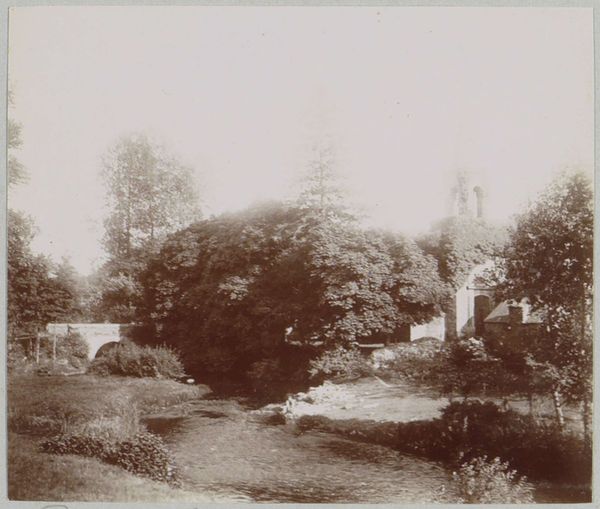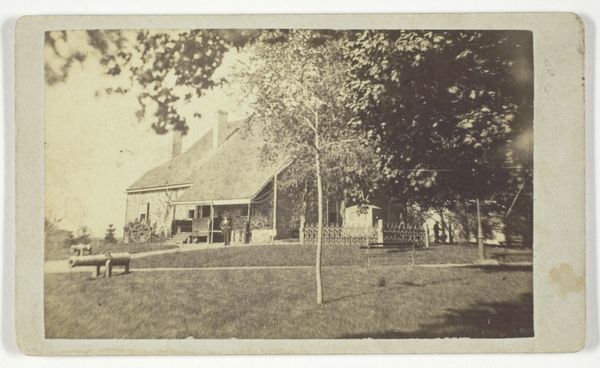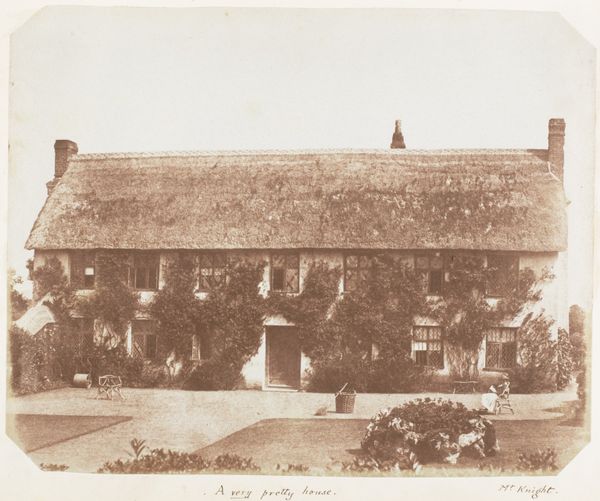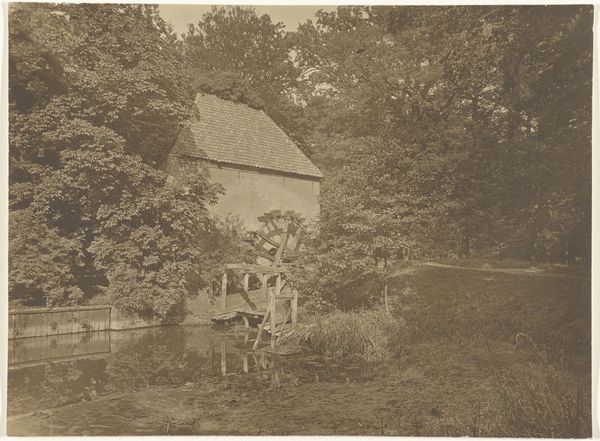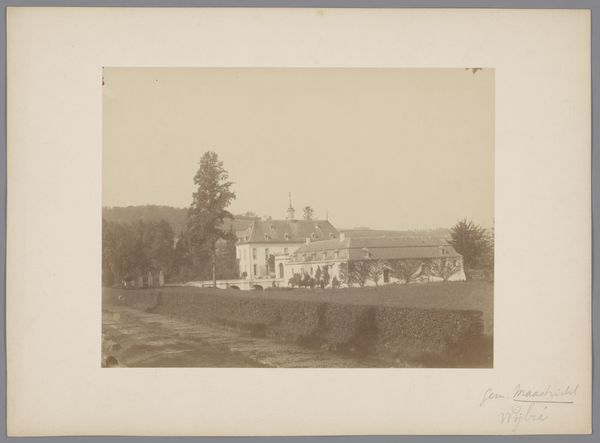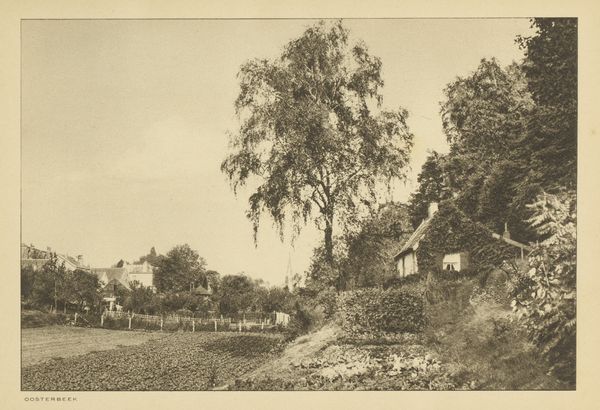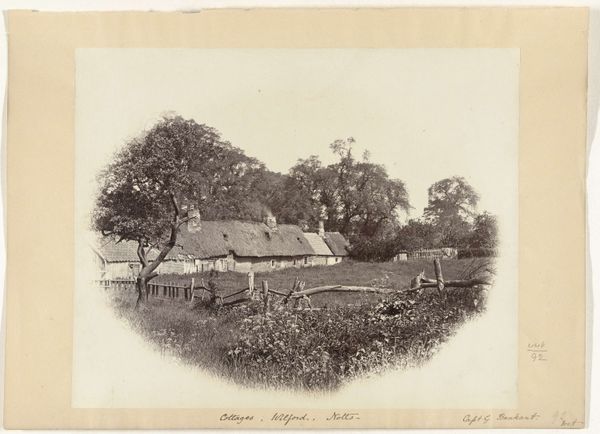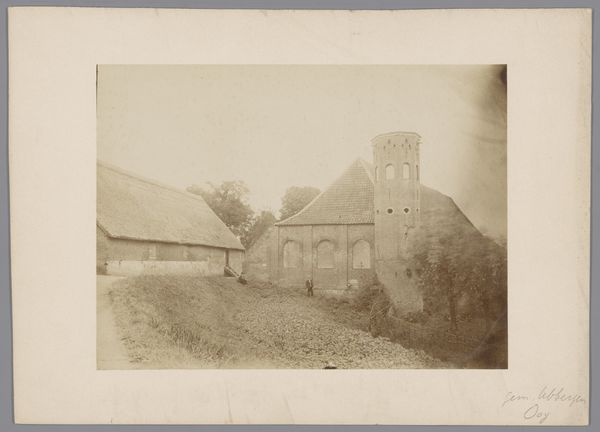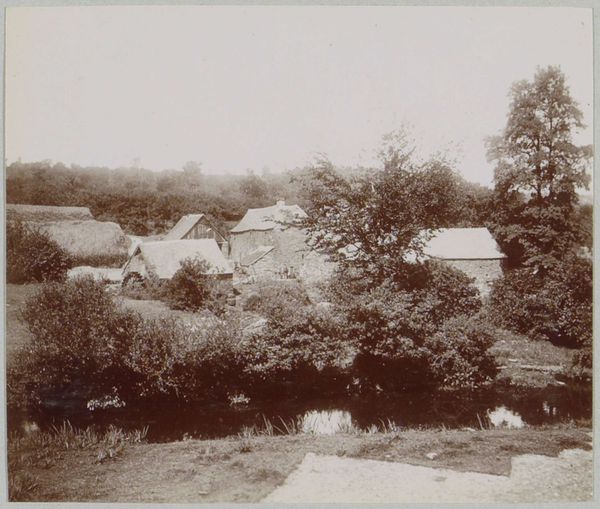
photography, albumen-print
#
landscape
#
photography
#
cityscape
#
albumen-print
Copyright: Public Domain
Editor: Here we have Benjamin Brecknell Turner's "Bonchurch," an albumen print from the 1850s. It's quite evocative, almost dreamlike in its sepia tones, depicting a church nestled amongst trees. It seems a rather secluded and sheltered place. What do you see in this piece? Curator: I see a carefully constructed image that speaks to Victorian anxieties about modernity and loss of traditional ways of life. The church, almost hidden by foliage, becomes a symbol of the old order, threatened by encroaching industrialization. Editor: So, the trees almost act as a barrier, a shield against something? Curator: Exactly. Consider the social context of the 1850s – rapid urbanization, technological advancements, and shifts in religious belief. Turner, like many of his contemporaries, was part of a movement looking to preserve and idealize rural England. The composition here invites us to reflect on who has access to this idyllic vision, and who is excluded. Was this a conscious exclusion or a consequence of social status? Editor: That’s fascinating. It makes me consider the photographic process itself too. Photography was so new then. How did its accessibility play a role in shaping the narrative of places like Bonchurch? Curator: That's a crucial point. The rise of photography democratized image-making, allowing for a wider distribution of these nostalgic landscapes. However, it also risked romanticizing rural life, obscuring the realities of poverty and hardship faced by many. It prompts a critical discussion of representation and agency. Who tells the story, and whose perspective is privileged? Editor: I hadn't considered that the image itself is a commentary on the changes happening at the time. Thank you for opening up my understanding of how art and historical context can shape each other. Curator: Absolutely. It's by interrogating these connections between art, society, and power that we truly engage with the work's significance.
Comments
No comments
Be the first to comment and join the conversation on the ultimate creative platform.
